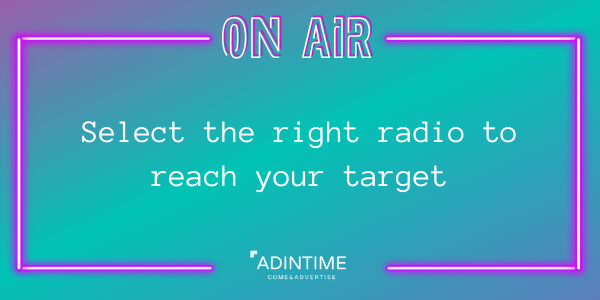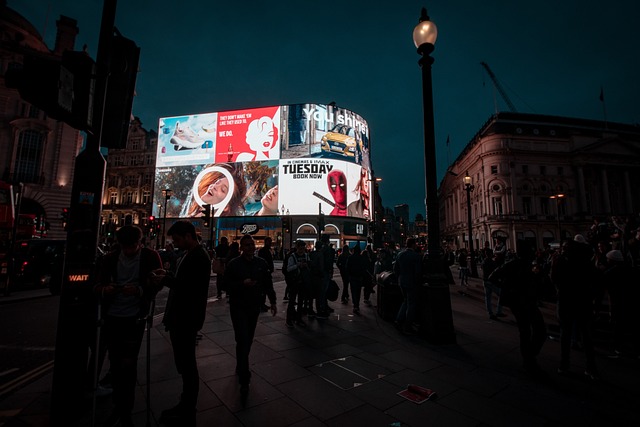
Print ads for banks and credit unions are a great way of promoting their products and services. They are a crucial component of any successful marketing campaign and they must be relevant to your target audience, trustworthy, and inspiring.
Bank print ads should be creative, engaging, and highly engaging. This will help your bank attract new customers and increase customer retention.
Engaging your audience with humor is a great way of getting your message across. These are some of the most humorous bank print ads.
American Express Ads
The best and most memorable banking ads are often funny to grab people's attention. American Express promoted their bank's credit card benefits by using Lin-Manuel Miranda, an actor.

The ad was part their campaign "Live Richly". This ad was a huge hit as it reflected the American mindset of "living to the fullest" and using money to fund the important parts of their lives.
MasterCard Ads
Another ad from MasterCard, titled "Priceless," was one of the most successful advertising campaigns of the late 1990s and early 2000s. It was a powerful campaign that spanned age groups and demographics to reach a broad audience of baby-boomers who had considerable spending power.
Mastercard's advertising campaign relied on a series ads that addressed different audiences. McCann, the advertising agency, achieved this by customizing each commercial for the target demographic.
The campaign was powerful and effective, but it didn't seem too overtly intrusive.
MasterCard also ran a print advertisement that featured a series of photographs featuring different types of people and their lifestyle choices. This ad was especially effective because it made the bank's offerings personal and unique, which boosted its credibility as a brand and encouraged people to choose it for their financial needs.

HSBC Print Ads
HSBC's bank advertising is engaging and fun. They encourage customers fold their ATM receipts in to origami animals to show how much fun banking is.
These ads show that banks can be enjoyable, but must also be supported by great service. They are also a good example for how to market in innovative ways.
Charles Schwab Print Ads
Charles Schwab shows how banks and credit cooperatives can be more personal, while others focus on building their reputation as family-friendly places to do business. This advertisement features real-life customers who have experienced the "service Difference" and it makes it clear that this ain't just another photo of smiling faces.
HSBC’s advertising highlights how it helps the environment through providing financing for projects which produce less carbon dioxide that traditional investment methods. This strategy is effective and has helped the bank to become a green leader within the industry. It's an excellent example of how bank advertising can be made engaging.
FAQ
How much does it take to advertise on social networks?
It is important to know that advertising on social media platforms is not free if you decide to do this route. You will be charged monthly depending on your time on each platform.
Facebook - $0.10 per 1000 impressions
Twitter: $0.20 per 1,000 impressions (if your tweet is on Twitter)
Linkedin - $0.30 per 1,000 impressions if you send out invitations
Instagram - $0.50/1000 impressions
Snapchat - $0.60 per 1,000 impressions ($0.40/user)
YouTube - $0.25 per 1,000 views
Tumblr $0.15 for 1,000 impressions text posts
Pinterest - $0.05 per 1,000 impressions per month
Google + - $0.15-$0.20 per 1 million impressions
Tumblr- $0.15-$.20 for 100,000 impressions
Vimeo – $0.20- $0.25 Per 10,000 Impressions
Soundcloud – $0.20-$0.25 for 1 million plays
StumbleUpon - $0.20 -$0.25 per 1 billion pageviews
Digg - $0.20 to $0.25 per 1000 diggs
Reddit: $0.20-$0.25 for 1000 comments
Wordpress - $0.20 to-$0.25 for 500 comments
Flickr - $0.20 -- $0.25 per 5,000 photo uploads
What is the primary purpose of advertising?
Advertising is more than selling products. It's about building an emotional connection with your customers.
Advertising is all about communicating ideas and values with people who are already interested. It's about changing people's attitudes. And it's about building relationships.
It is all about making people feel good.
But if you don't know what your customers want, you can't sell anything to them.
It is essential to first understand the needs and purchasing habits of your customer before you embark on any advertising project.
You can then design ads that resonate with them.
What is an advertisement campaign?
An advertisement campaign is a series containing advertisements to promote a product. It may also refer to the entire production of such ads.
The Latin word for "to Sell" gives rise to the term "ad". Marcus Terentius Varro (116–27 BC), was the first to make it a verb, meaning "to make sale".
Advertising campaigns are often carried out by large agencies or companies. There may be many media types involved, including print and television as well as radio, TV, and internet.
Advertising campaigns last several months and are usually focused on specific goals. Campaigns can be targeted at increasing awareness or sales, for example.
What is an advertisement buyer?
An advertiser purchases advertising space on TV, radio or print media.
An advertiser pays for the time they want their message to appear.
They are not necessarily looking for the best ad but rather what is most effective at reaching their target market.
An advertiser might have details about potential customers, including their age, gender and income.
The advertiser can use this data to determine which medium will work best for them. An example is direct mail that appeals to older people.
Advertisers also evaluate the competition. Advertisers may decide to place their ads in close proximity to similar businesses.
Advertisers should also consider the budget they have and how long they plan to spend it before it expires.
Is there any way to get free traffic?
Refers to traffic that is free from search engine results. This type of traffic is known as organic traffic or natural traffic. You can get traffic free of charge by using article marketing, social media marketing and blogging.
Article Marketing is a popular way to get traffic for free. It has an extremely low cost-per-click (CPC). Paid ads have a higher CPC, but the CPC is typically much lower than paid ads. Article marketing can also be referred to content marketing.
Social Media Marketing: Social media sites such as Facebook, Twitter, LinkedIn, and LinkedIn make it easy to promote your company through advertising. You can use these platforms to post updates, share photos and build relationships with people who may become potential customers. Many businesses choose to buy ad space in social media because they want a wider reach at a reduced price.
Blogging – Another way to generate traffic for free is to blog. You'll attract visitors if you write quality content that people enjoy reading. Once your blog is attracting visitors, it's possible to make money from it by selling products and/or services.
Email Marketing - Email marketing has been around since the early days of the Internet, but today it still remains one of the best ways to drive traffic to your website. Sending emails regularly is a good strategy to grow your list of subscribers and eventually sell them something.
How can you choose your target audience?
Start with yourself and those closest to your heart. You might be unsure where to begin. Ask yourself: "Whom am I trying to reach?"
Ask yourself the following questions: Who are my industry's most influential people? What are the problems they face daily? Which are the smartest people working in my field? Where do they hang out online?
Start at the beginning of your business. What was your motivation for starting? What problem were you able to solve and how did this happen?
These answers will help identify your ideal clients. These answers will help you understand your ideal clients and what motivates them to buy from you.
For clues on who your competitors cater to, check out their websites and social media pages.
Once you have identified your target customer, you need to decide the best channel to reach them. If your company offers services to real estate agents you might make a website that targets home buyers.
If you provide software to small businesses, you could develop a blog targeting those companies' owners.
If you sell clothing, you could create a Facebook page for teens. You could also set up a Twitter account if your restaurant is a business owner to help parents find kid-friendly restaurants.
It is important to remember that there are many methods of getting your message across.
What should you know about radio advertising
You should understand how the different types of media affect each other. All media forms can be considered complementary, rather than competing.
Radio is best used to complement television advertising. It can reinforce key messages and provide additional information.
Radio listeners often find TV commercials too lengthy. Radio ads tend to be shorter and more affordable.
Statistics
- Google will display whichever ad type (CPM or CPC) is expected to earn more revenue for the publisher, which is in Google's best interest since they take a 32% share of the revenue. (quicksprout.com)
- Nonetheless, advertising spending as a share of GDP was slightly lower – about 2.4 percent. (en.wikipedia.org)
- Advertising's projected distribution for 2017 was 40.4% on TV, 33.3% on digital, 9% on newspapers, 6.9% on magazines, 5.8% outdoor, and 4.3% on radio. (en.wikipedia.org)
- In 1919 it was 2.5 percent of gross domestic product (GDP) in the US, and it averaged 2.2 percent of GDP between then and at least 2007, though it may have declined dramatically since the Great Recession. (en.wikipedia.org)
External Links
How To
How to show ads on a website
Ads are an essential part of any business. They reach potential customers, and keep them coming back.
Advertising also allows you to promote and sell your products and/or services without spending money.
You can use Google Adsense to display text and image advertisements on your blog, website, forum, or other online content.
Google Adsense lets you earn revenue for each click on the ad links on your website. To set up your ads, you don't need to code anything.
To get started, just sign up for a free account at www.google.com/adsense. These are the next steps:
-
Use the Ad Builder to create your ads. The tool lets you create different ads, including text, images, video, and interactive ads.
-
Once you've created your ads, you'll need to upload them to your AdSense account. Click "Upload" in the left-hand navigation to do this.
-
Next, add keywords relevant to your product or services to ensure that your ads are displayed in search results relevant your niche.
-
Copy and paste your ads to the relevant areas of your site. After you do this, your ads will automatically be uploaded to your website.
-
Visitors will be directed to your site if they click on any of your ads.
-
You earn when someone clicks an AdSense advert.
-
Click the My Account tab to see reports that detail the performance.
-
You can also save your earnings as CSV files.
-
Changes to your ads or your target audience can help you increase your earnings.
-
You can also stop or delete ads at any point.
-
You can also contact us with questions or concerns.